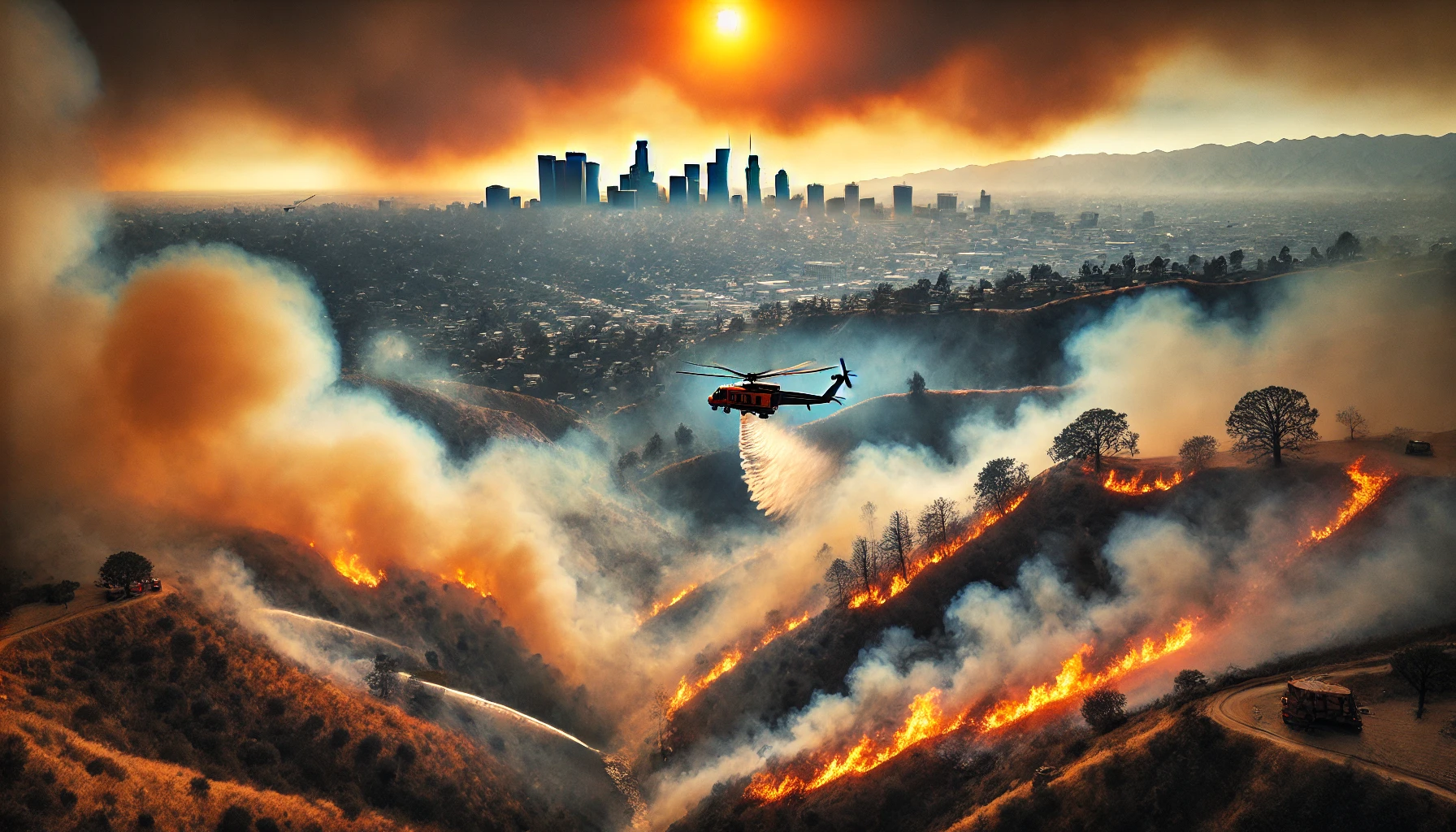The Los Angeles wildfire of January 2025 has become a significant event, impacting thousands of lives and highlighting the increasing severity of natural disasters fueled by climate change. With vast areas of Southern California affected, the wildfire has caused widespread destruction, displaced families, and raised critical questions about preparedness and prevention. This article provides updates on the situation, explores its impacts, and examines the long-term implications for the region.
Current Updates on the Wildfire
As of mid-January 2025, the wildfire has scorched over 50,000 acres, with strong Santa Ana winds exacerbating its spread. Firefighters from across the state have been deployed to contain the blaze, but the rugged terrain and dry conditions have posed significant challenges.
Authorities have issued mandatory evacuation orders for several communities in Los Angeles County, with emergency shelters set up to accommodate displaced residents. While containment efforts are underway, officials estimate it could take weeks to fully control the fire.
The air quality in Los Angeles and surrounding areas has deteriorated, prompting health advisories for vulnerable populations, including children, the elderly, and individuals with respiratory conditions.
Causes of the Wildfire
The Los Angeles wildfire is believed to have been sparked by a combination of human activity and natural factors. Investigations are ongoing, but preliminary reports suggest that the dry vegetation, record-breaking temperatures, and high winds created a perfect storm for the fire to ignite and spread rapidly.
Experts have pointed to climate change as a contributing factor, with prolonged drought conditions and hotter summers increasing the likelihood and intensity of wildfires in California. Human activities, such as poorly managed campfires or power line malfunctions, are also common triggers for such events.
Immediate Impacts of the Wildfire
The wildfire has had devastating effects on the residents, wildlife, and infrastructure of the affected areas. Here’s a breakdown of its immediate impacts:
- Human Displacement: Thousands of residents have been forced to evacuate their homes, with many unsure of when they can return. Emergency shelters are struggling to meet the demand, and aid organizations are working to provide food, water, and medical assistance.
- Property Damage: Hundreds of homes and structures have been destroyed or severely damaged, leaving families without shelter and belongings. Preliminary estimates place the cost of damages in the hundreds of millions of dollars.
- Environmental Damage: Vast swaths of forest and wildlife habitats have been destroyed, threatening local ecosystems. Wildlife in the region is facing displacement and loss of food sources, further endangering vulnerable species.
- Health Risks: Poor air quality caused by smoke and ash is posing serious health risks. Hospitals have reported an increase in patients experiencing respiratory issues, and masks are being distributed to protect residents from inhaling harmful particles.
Long-Term Implications
The Los Angeles wildfire of January 2025 is a stark reminder of the growing challenges posed by climate change and urban expansion. Beyond its immediate impacts, the wildfire has far-reaching implications:
- Economic Costs: The financial toll of wildfires extends beyond property damage. Businesses have been disrupted, tourism has declined, and the cost of firefighting efforts is enormous. Recovery and rebuilding efforts will require significant investment from both public and private sectors.
- Infrastructure Resilience: The wildfire has exposed vulnerabilities in local infrastructure, from power grids to emergency response systems. Strengthening these systems will be crucial to prevent future disasters and ensure swift recovery when they occur.
- Policy and Planning: This event underscores the need for comprehensive wildfire management strategies. Policymakers must prioritize measures such as controlled burns, improved building codes, and enhanced emergency response plans to reduce risks.
- Climate Action: The wildfire has reignited debates about climate change and the urgency of reducing greenhouse gas emissions. California, known for its climate initiatives, may use this disaster as a catalyst to accelerate its environmental goals.
Community Response and Support
Amid the devastation, the resilience and solidarity of communities have been a beacon of hope. Local organizations, volunteers, and neighbors have come together to support those affected, providing meals, clothing, and emotional support.
Charities and fundraising efforts are gaining momentum, with many organizations setting up relief funds to assist with recovery. Social media platforms have also played a vital role in spreading awareness and mobilizing resources.
While the road to recovery is long, the collective effort of communities and support systems is helping to rebuild lives and restore hope.

0 comments
No comments yet. Be the first to comment!
Your comment